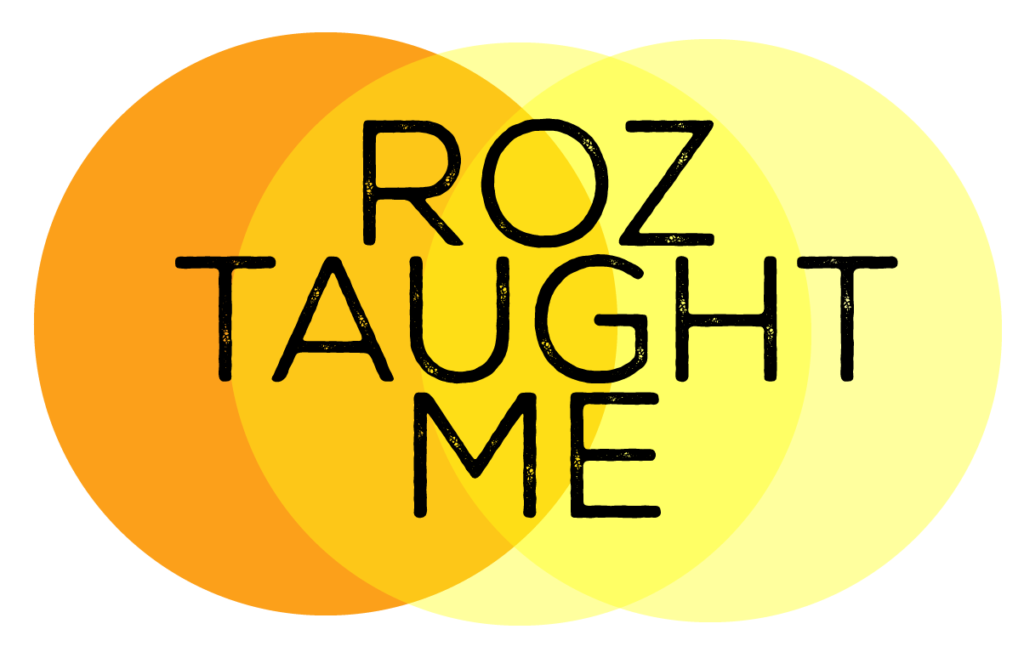
Over the next several weeks, join us in a celebration of the legacy of Dr. Rozlyn Linder. Our colleague, friend, and important voice in literacy education. While we continue to mourn her passing this past December;her teaching, vision, and work lives on and inspires.
For each post, we will reference her books, workshops, and conversations in the specific ways we are using them today.
We know Roz’s work influenced so many of you, too, and so we invite you to write your own #RozTaughtMe post. We suggest your post structure may go like this:
- Capture Roz’s work (a strategy, method, chart, writing lesson, etc)
- Share how you have used it or how it has inspired your teaching
- Invite others to try it out as well
Please link your posts in the comments section of any #RozTaughtMe post on this site and/or share on Twitter and Facebook. We will round up and re-blog some of your posts as guests posts here on our Community blog.
#RozTaughtMe post by Heather Rocco, member of The Educator Collaborative
The Big Book of…Grammar!
 Two years ago, Heinemann published The Big Book of Details: 46 Moves for Teaching Students to Elaborate, Roz Linder’s fantastic professional text that provides educators more teaching tools than even the title suggests.
Two years ago, Heinemann published The Big Book of Details: 46 Moves for Teaching Students to Elaborate, Roz Linder’s fantastic professional text that provides educators more teaching tools than even the title suggests.
Yes, the book teaches us how to show students to add more details to their writing, and it does so brilliantly. As I have used the book in my work, though, I have also used Roz’s lessons to teach grammar.
I know…grammar instruction. Bleh.
However, Roz brings (what could be boring work) to life through the use of multiple mentor sentences from a variety of authors. For each of the 46 teaching moves, Roz includes a “What Does This Move Look Like in Writing?” section, a small collection culled from professional writers to show the elaboration in action.

Sometimes these model sentences use the same grammar technique, and those are the times I spring into grammar mode. In the section called “Details that Dance,” Roz explains several moves that use a specific grammar pattern. In her explanation of this section Roz writes, “many of the details focus on sentence structures and ways to organize and reveal action.” In other words, this section shows writers how to use the architecture of sentences (a.k.a. grammar!) to make their stories come alive.
I suspect Roz may have purposefully avoided using the phrase “grammar instruction” because, well, see above (bleh!), but in her explanations of teaching the moves she notes several opportunities to name the grammatical technique.
Let’s look at one example. In Move 3 (71) of “Details that Dance,” Roz explains how writers use “time markers” to situate a reader in a time in history, time of day, or time of year. She offers several examples from published books to model this move. One is from Ruby Bridges’ book, Through My Eyes. She also includes a sentence from Avi’s novel, Sophia’s War.
On page 72, Roz explains “authors use prepositional phrases and a few adverbial phrases” in these model sentences. Roz notes that teachers may choose to give students these grammatical terms during the lesson to help them “understand what phrases are.”
How I’ve Used Roz’s Work
In my teaching, I have modified her suggestion a bit, combining Roz’s elaboration lesson with an instructional method for teaching grammar that I learned from Jeff Anderson.
Here’s what it looks like:
After following Roz’s steps for introducing this move (72-73), I ask students to look again and notice what grammar tools the writer uses. Following Jeff Anderson’s model of using mentor sentences to teach grammar, I ask students to share what they notice, guiding them through a conversation about the importance of using a comma to set off the introductory phrase.

My goal is for students to notice and understand how the comma is used so they know when to use it in their own writing. As I work with students using the guided practice for time markers (73-74), I also remind students to use the comma just as we noticed them in the mentor sentences composed by Ruby Bridges and Avi.
As I conference with students, we take a minute and check our introductory phrase commas, too! Students self-edit, as well as peer edit, for this grammar skill.
Try It!
As you use Roz’s Big Book of Details: 46 Moves for Teaching Writers to Elaborate, you will undoubtedly discover many ways you can extend the lessons (as Roz encourages you to do in her book).
Dr. Roz Linder has provided us a tremendous resource in this and all her professional texts. I am so grateful to always have her wisdom nearby me on my bookshelf.
Please share your own #RozTaughtMe posts by linking to them in the comments below.






I love this! I had to go back to my copy and look more closely at that section because I missed the clear grammar connections. Right there on page 72, Roz mentions how the mentor sentence authors used “prepositional phrases and a few adverbial phrases.” My eyes glaze over at grammar talk sometimes (the “bleh” factor, yes), but combining Jeff Anderson’s work with Roz’s makes SO much sense. Thank you!